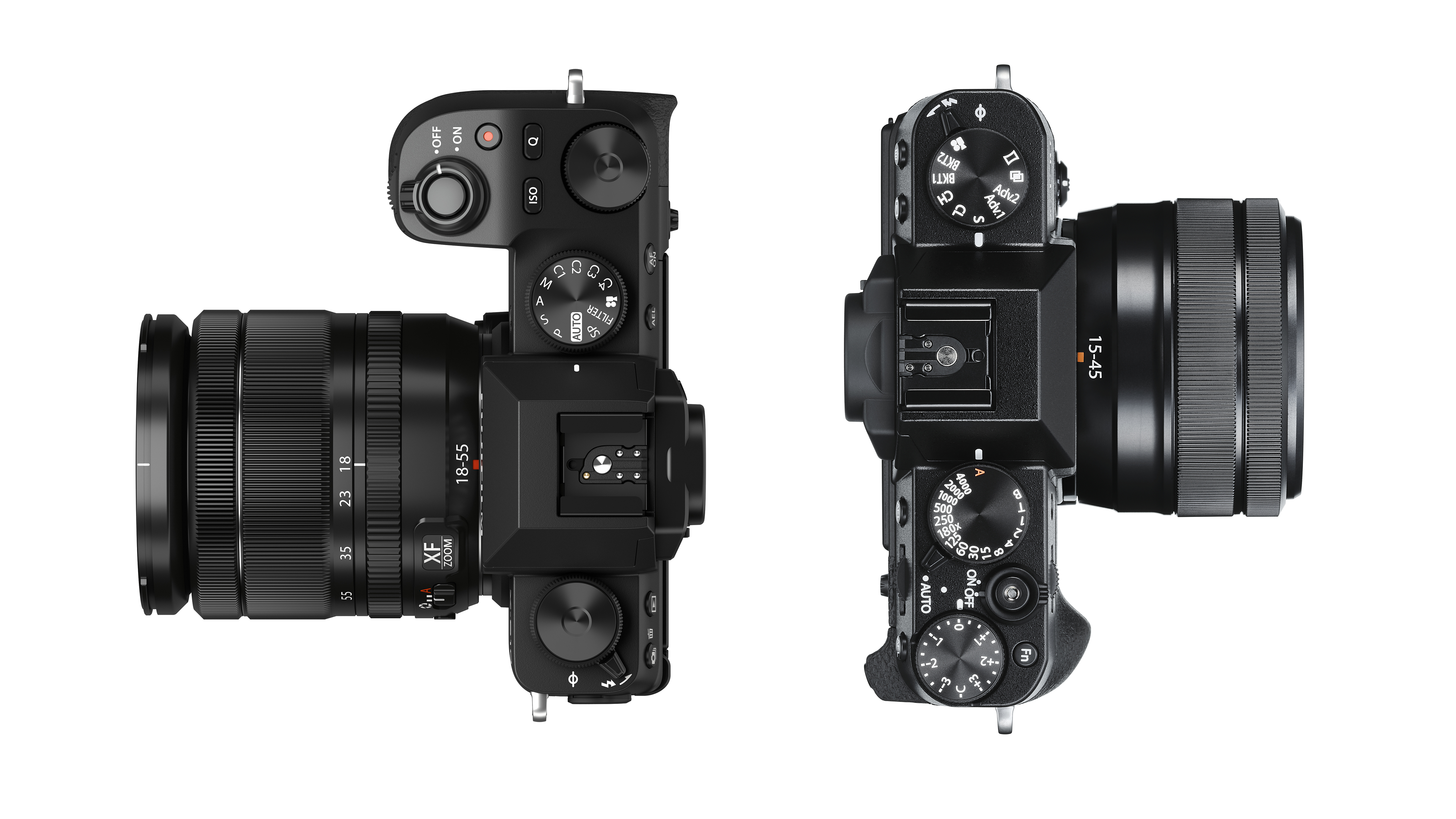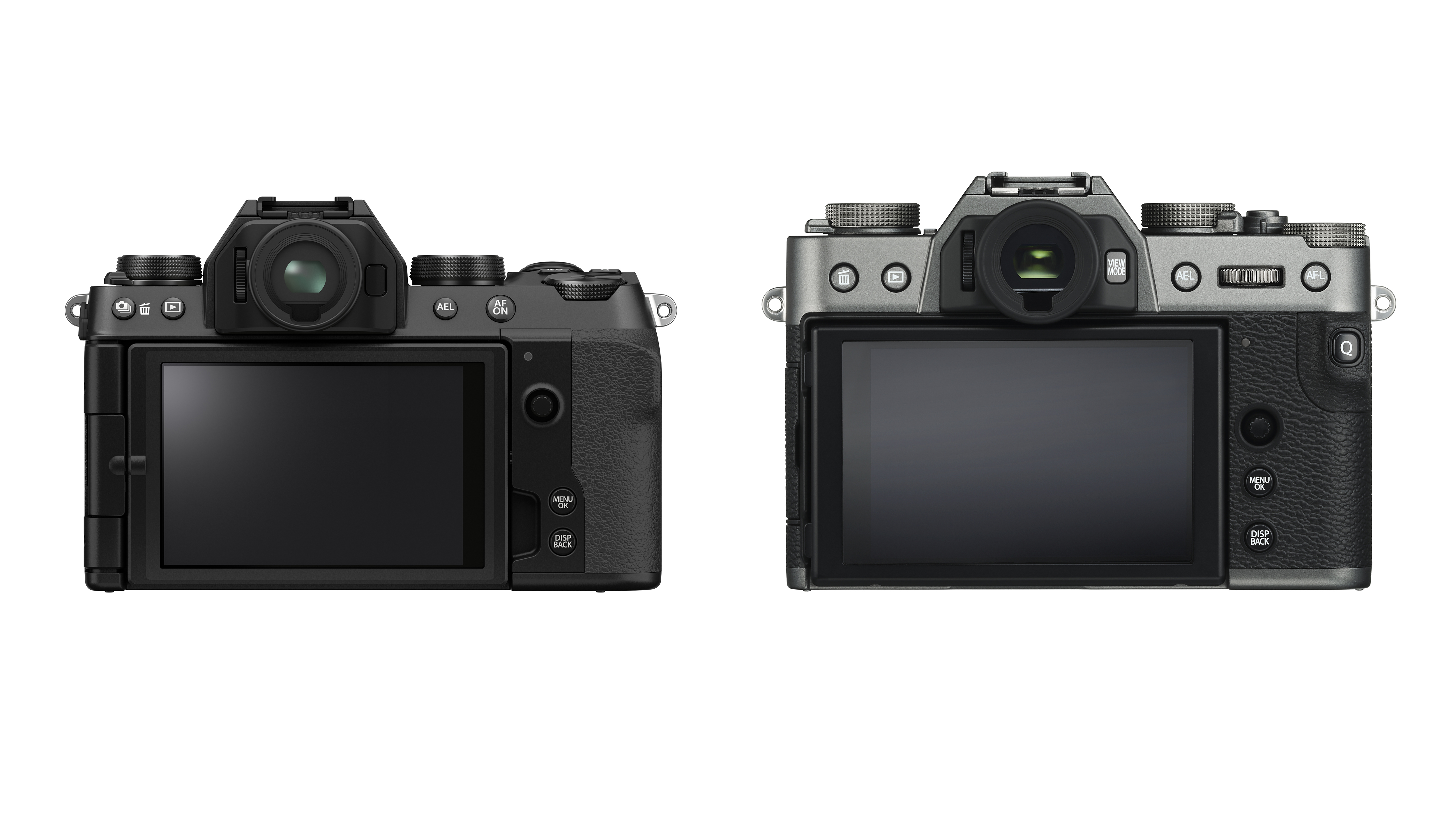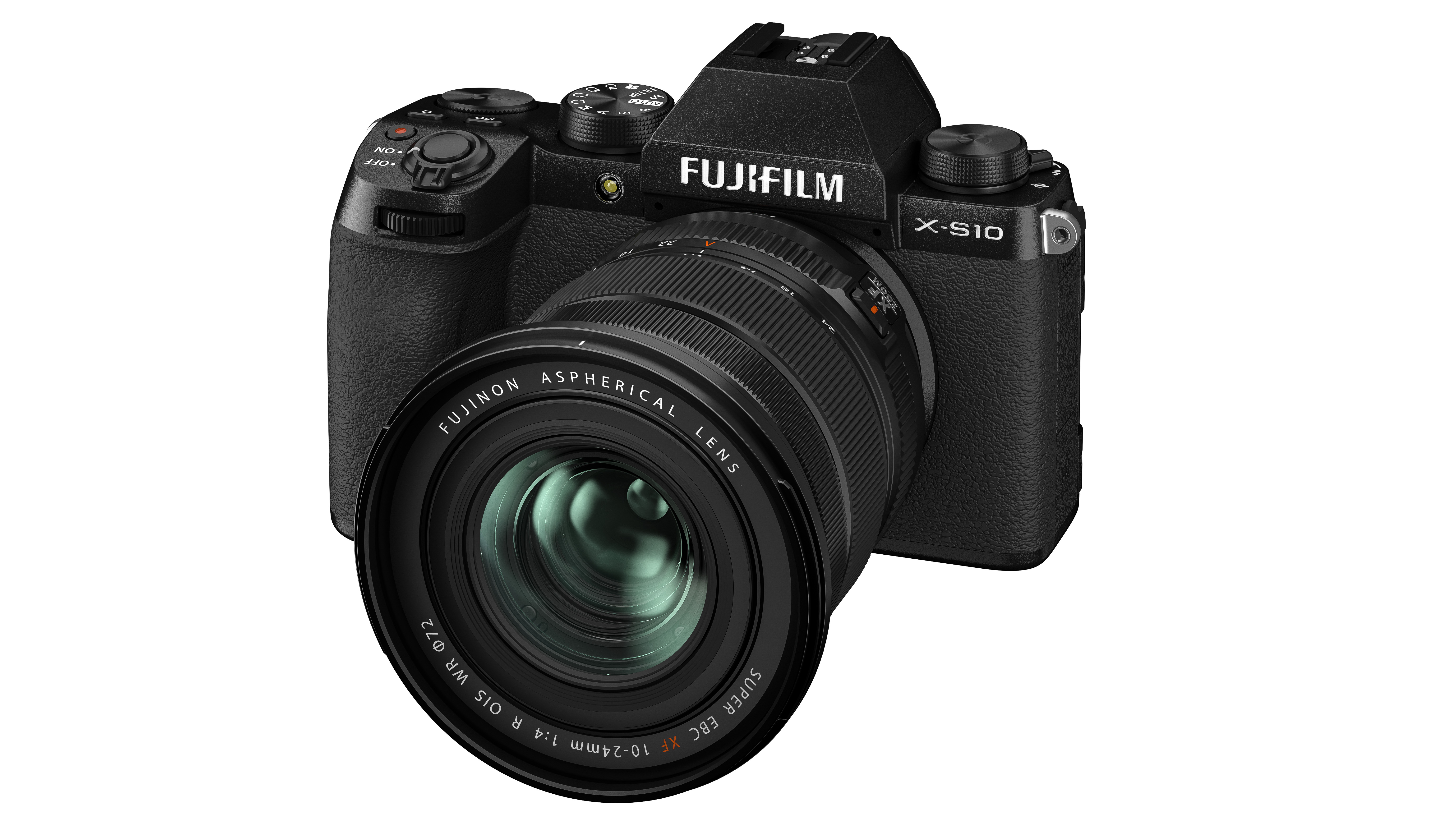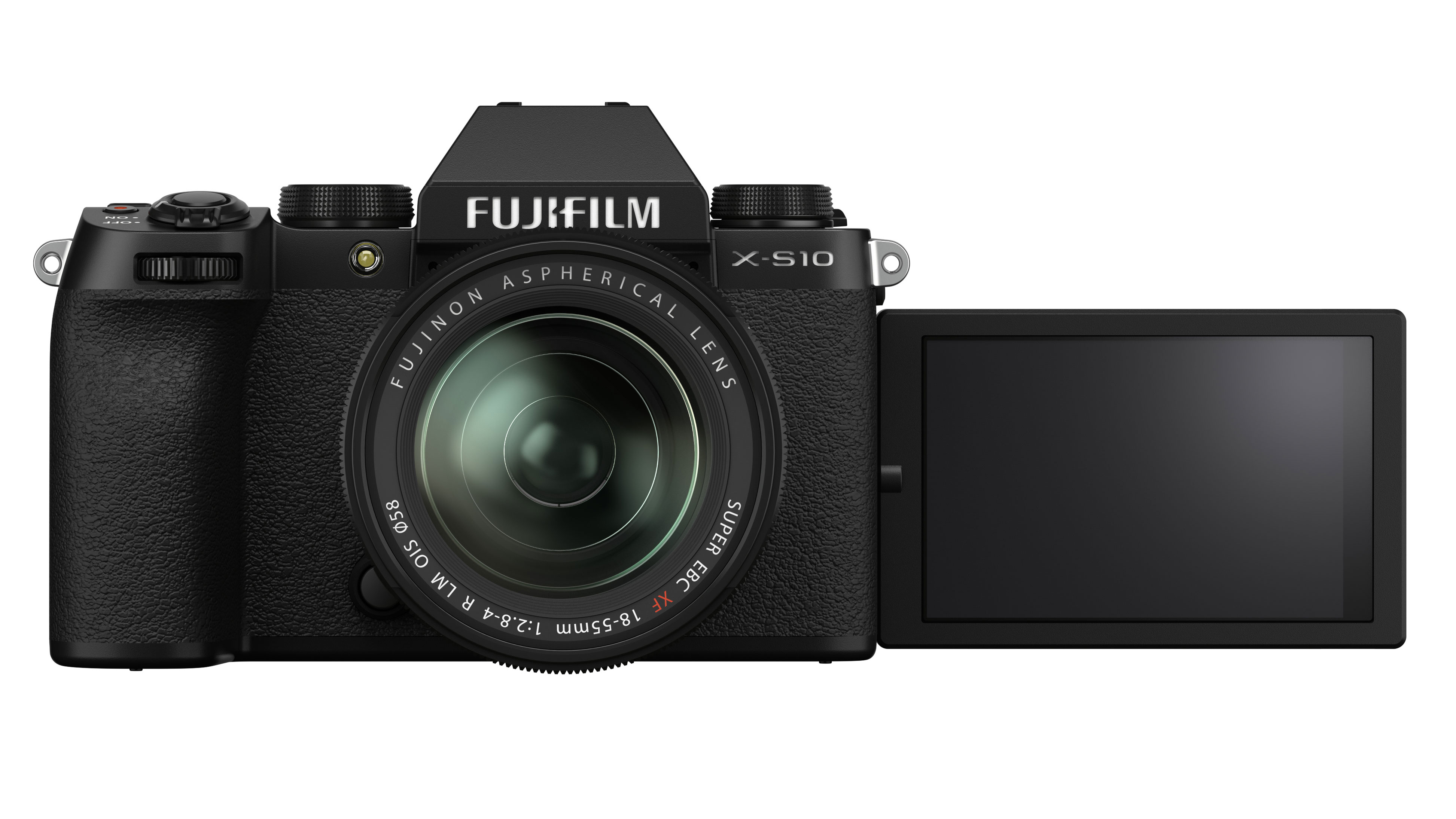Fujifilm X-S10 vs X-T30: How do Fujifilm's mid-range mirrorless cameras compare?
Fujifilm X-S10 vs X-T30: discover which of these two mirrorless cameras is the right on for you
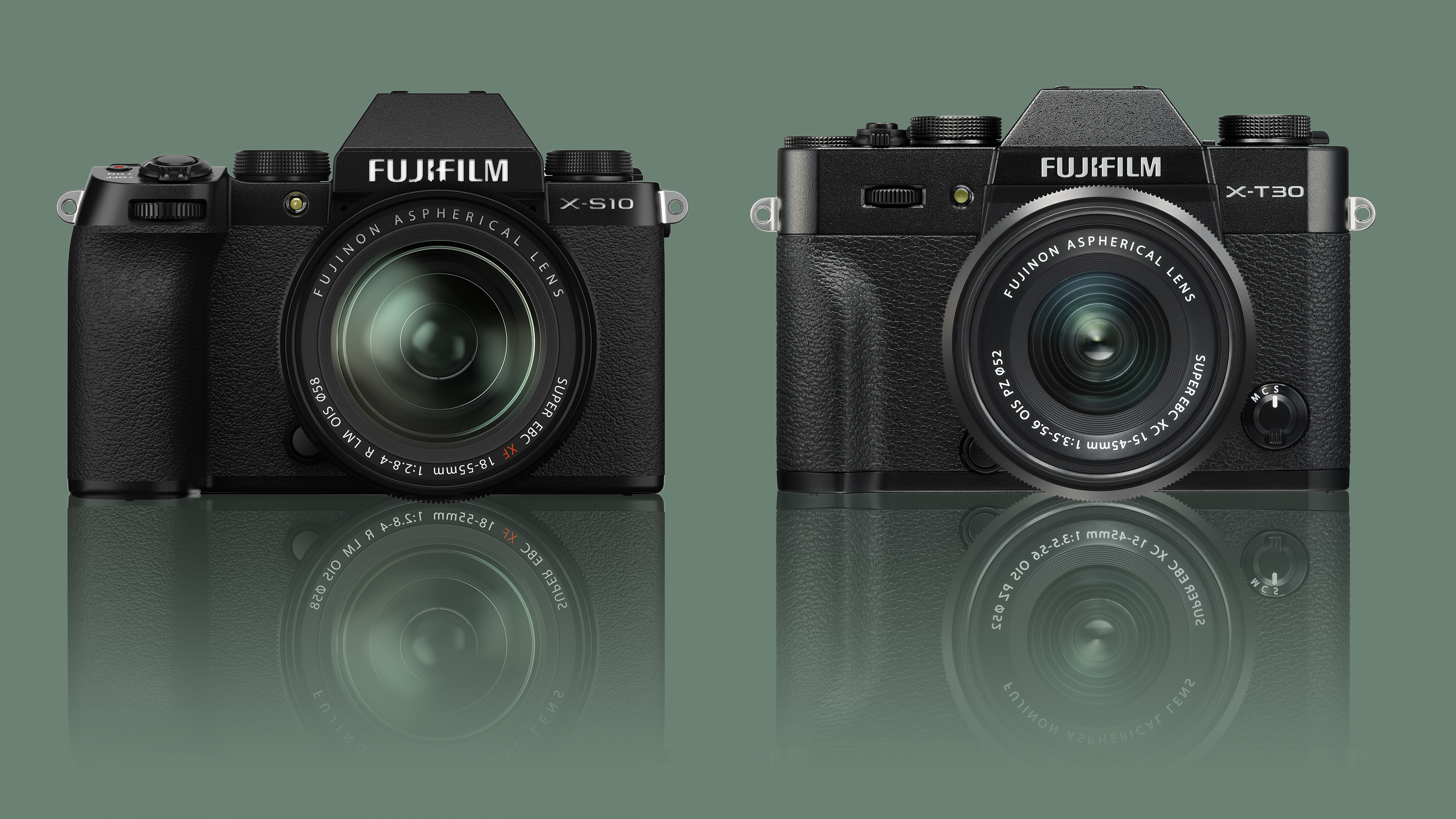
Our Fujifilm X-S10 vs X-T30 comparison guide sees Fujifilm’s mid-range mirrorless cameras go heat-to-head.
Until now, the Fujifilm X-T30 has been the natural choice for those looking to make the step up from one of Fujifilm’s entry-level cameras like the X-T200 or X-A7, but can’t quite justify Fujifilm’s flagship X-T4.
With the arrival of the Fujifilm X-S10 however that arrives at a similar price point, things have got a little more muddled. The X-S10 though isn’t designed to be a replacement for the X-T30 however, but an alternative option to appeal to new set of users who until now haven’t been drawn to the retro-inspired control layout of Fujifilm’s current crop of mirrorless cameras.
• Read more: Best Fujifilm cameras
This means that both cameras share many of the same core features. This means that the sensor used in the X-S10 and X-T30 is identical, with both using the same 26-megapixel X-Trans CMOS 4 sensor (that’s also used by the pricier X-T4 and X-Pro3). Other key features like burst shooting speeds are also the same. Both the X-S10 and X-T30 can achieve a continuous shooting of 8fps with the mechanical shutter, while both can shoot at up to 20fps when switching to an electronic shutter (or 30fps with a 1.25x crop applied).
The X-S10 though isn’t just a X-T30 with a different design, but comes with a number of benefits. Here’s we will explore what these advantages are and if they’re a deal breaker for you.
Fujifilm X-S10 vs X-T30: Design and handling
Perhaps the most obvious thing that separates the X-S10 and X-T30 is the two different design directions they take. While the X-T30 follows Fujfilm’s other mirrorless cameras with a shallow handgrip and plenty of external controls that includes Fujifilm’s distinctive trio of control dials for shutter speed, ISO and exposure compensation, the X-S10 does things a little differently.
For starters, there’s a much more pronounced and comfortable handgrip, while Fujifilm’s stripped back the amount of body-mounted controls and replaced them with a more commonplace PASM dial (Program, Aperture, Shutter Speed, Manual). This is designed to appeal to DSLR users who until now have been deterred from switching to an X-Series camera because of what at first glance appears to be a confusing set of controls.
Fujifilm X-S10 vs X-T30: Video
Both the X-S10 and X-T30 support DCI 4K/30p recording with no crop, either internally at 4:2:0 8-bit or 4:2:2 10-bit if you’re going to output to an external recorder via the mirco-HDMI port.
There are some differences however. Thanks to a newly designed heat dispersion system, the X-S10 can record for up to 30 minutes compared to the 10 minute limit on the X-T30 when shooting 4K. The X-S10 can also record 1080p/240p slow-motion footage, while there’s a digital image stabilization system that works with both the camera’s IBIS and lens-based systems.
Finally, the X-S10 sports a dedicated movie record button on the body of the camera, while the X-T30 requires you to be in the camera’s movie shooting mode before activating recording by pressing the shutter button.
Fujifilm X-S10 vs X-T30: Autofocus
Both cameras enjoy Fujifilm’s 425-point hybrid autofocus system that sees both phase-detect and contrast-detect AF sensors used to acquire focus. There’s a host of settings, from independently selecting one of the 425 points to advanced focusing tracking modes.
There is a subtle difference between the two though in that the focusing system in the X-S10 can focus in lower light compared to the X-T30. This sees the X-S10 focus down to -6EV, while the X-T30 can only manage -3EV. This might not be an issue if you’re planning to shoot in moderately bright conditions or better most of the time, but if you’re planning to shoot regularly in darker-lit environments, this is something to consider.
Fujifilm X-S10 vs X-T30: Image stabilization
While the X-T30 relies on Fujifilm lenses that feature the company’s Optical Image Stabilization (OIS) to provide compensation from camera shake (and the level of compensation is dependent on the lens), the X-S10 benefits from Fujifilm’s in-body image stabilization (IBIS). This is the third time we’ve seen this in-body system in a Fujifilm camera, following both the X-H1 and X-T4.
This unit though is a completely new design that’s some 30% smaller than the mechanism found in the X-T4 and sees the X-S10 deliver up to 6 stops of compensation when paired with a Fujifilm lens. Not only does this enhance the performance of OIS-equipped lenses, but means many of Fujifilm’s fast prime lenses that forego OIS can be used at much slow shutter speeds on the X-S10 compared to the X-T30 and still capture images without signs of camera shake.
Fujifilm X-S10 vs X-T30: LCD display
Both the X-S10 and X-T30 feature 3.0-inch touchscreen displays that sport a matching resolution of 1.04m-dots. The difference is in the mechanism and the movement the two displays provide. While the X-T30’s screen can be tilted up and down by 90-degrees, it’s nowhere near as versatile as the X-S10’s flip out display. Hinged at the side of the camera it can be pulled outwards to face the subject - handy for those selfshooters and vloggers, while it can also be folded flat against the back of the camera to protect it from scratches when on the move.
Read more:
Fujifilm X-S10 vs X-T4
Fujifilm X-S10 review
Fujifilm X-T200 review
Fujifilm X-T30 review
Fujifilm X-T4 review
Fujifilm X-Pro3 review
Best Fujifilm lenses
The best camera deals, reviews, product advice, and unmissable photography news, direct to your inbox!
Phil is the Managing Editor of Top Ten Reviews, and is a former Editor of Techradar's camera channel. He is an accomplished photographer, and specializes in shooting cycling and fast cars.
